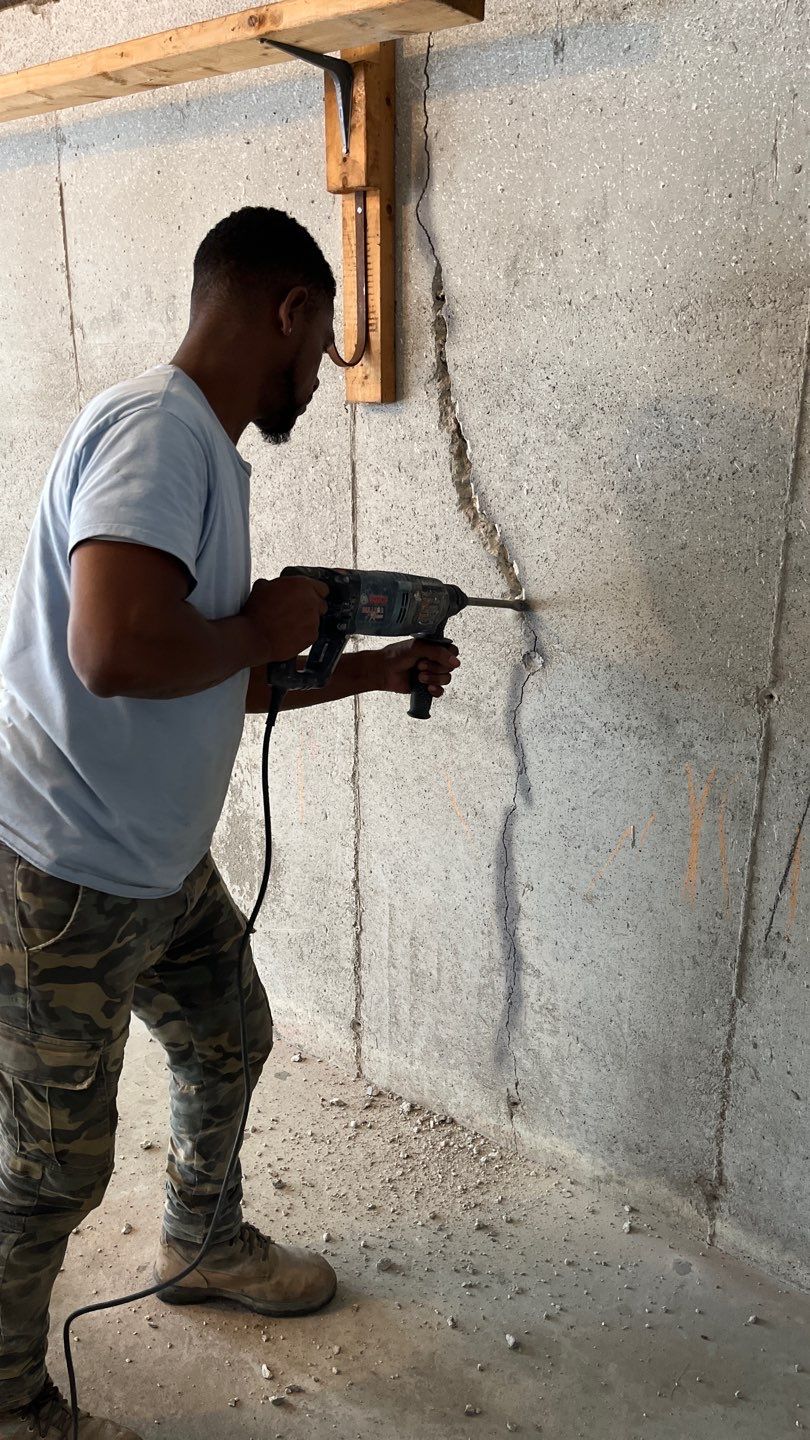Foundation cracks are a common and troubling sight—and they happen for a variety of reasons. This article discusses the major causes of foundation cracks and which ones need a foundation crack repair. Following are 10 of the most frequent reasons foundations crack.
1. Foundation Settlement
Foundation settlement (or settling) is a general term describing natural foundation sinking that occurs over years. All homes settle after a few years of construction due to time and weather. There are two types of settlement: initial settlement and ongoing settlement. Initial settlement takes place within the first few years of construction, while ongoing settlement is due to site factors which are likely to continue until the specific cause is dealt with. Sometimes homes do not settle evenly, resulting in uneven floors. This causation is likely that the home was built on poorly compacted soil.
2. Natural Curing
As mentioned above, within the first two years of construction, the concrete dries up and hairline cracks appear on concrete foundation walls. These cracks are purely cosmetic and can be repaired easily with epoxy or cement; however no intensive foundation crack repair is necessary.
3. Cold Weather
When the weather gets so cold the soil freezes, it expands upwards. This is called “frost heave.” This shifting soil can destabilize a home’s foundation and tilt the flooring The chances of frost heave damage increases when temperatures continually fall below 40 degrees. Tell tale signs of foundation damage due to frost heave include cracking within the concrete floor slab as well as sections of the slab that are tilted or displaced.
4. Hot Weather
Very hot weather can cause the need for foundation crack repair. During extreme summer heat, the ground warms up during the day, which causes the concrete to expand. Then, when the weather cools off at night, the concrete shrinks back to its original size. This constant expanding and shrinking can cause cracks in a foundation. Again, the more severe the weather, the larger the chance of foundation cracks.
5. Earthquakes
Tremors and quakes happen all the time deep inside the earth when tectonic plates move and collide. This movement causes seismic waves that shake the ground and can move the soil beneath your home, thus cracking the foundation. Even though New England is not considered to be earthquake prone, they do happen. And even minor shifts in the earth can cause some foundation damage.
6. Poor Grading
If your yard is not graded properly, it can have a huge impact on your home’s foundation. For instance, when it rains, the water will not drain correctly. Instead of flowing out and away from the house, the water flows back towards the house and ends up in the foundation. Standing water weakens concrete, causing cracks. Should this be the case at your house, proper grading and a foundation crack repair is imperative.
7. Soil Expansion
Some types of soil contain minerals that absorb water more fully than others. Things like ground load, degree of soil saturation, and the thickness of the soil stratum will determine the degree of soil expansion around your home. With absorbent soil types, what happens is: when it rains, the water is absorbed and the soil expands. In dry months with little or no water, the soil shrinks. This cycle of expansion and shrinkage can lead to foundation cracks.
8. Storms
Rainstorms can produce a lot of water, which can spell disaster. Large amounts of water can cause expanded soil to push up against your home’s foundation, causing walls to buckle or crack. Proper yard drainage is paramount to avoid this type of damage.
9. Tree Roots
The job of tree roots is to find water and they travel far and wide to do so. If there is any water under or near your foundation, the roots will find it. This process causes the soil to shrink and settle excessively, which, in turn, causes foundation cracks. Trees should never be grown in close proximity to your home’s foundation. However, if the trees are there, you can expect some problems.
10. Plumbing Leaks, etc.
Things like plumbing leaks, particularly in the basement can result in significant foundation damage. In addition, gutters need to be cleaned regularly and all downspouts must be pointed away from your home. Leaks and overflows can potentially leak to foundation cracks. It is important to remember that water is not a friend to concrete.
Types of Foundation Cracks That Must Be Repaired
If you are not sure when it’s time to worry over foundation cracks, you are not alone. Cracks are always a bit disturbing and unsightly; however, not all of them indicate structural damage—especially the hairline cracks. On the other hand, some cracks require immediate foundation crack repair.
Foundation cracks are put into two categories: structural and non-structural. Structural cracks are caused by actual foundation movement and need immediate foundation crack repair as they threaten the structural integrity of your home. However, this is a balancing act, as non-structural cracks may not be totally harmless either. For example, vertical basement cracks, while not structural in nature, can allow water to seep in and cause trouble down the line.
When to Worry About Your Foundation Cracks
It’s time to call a professional contractor when you see any of the following:
- Cracks that are wider than 1/10th of an inch
- Cracks that are wider at one end than the other
- Stair step cracks in brickwork
- Horizontal foundation cracks (with or without bowing)
- Several vertical cracks that are to each other
- Huge, diagonal cracks
- Cracks that go across the ceiling and down a wall
How to Avoid Foundation Cracks
The most significant foundation problems are caused by water. The best way to take care of your home’s foundation is to make sure water is controlled and drained properly. Here are some hints:
- Make sure your yard is properly graded: Qualified foundation repair contractors or landscapers can help you.
- Clean your gutters regularly: Clogged gutters retain water which then flows down the side of your house and into the ground.
- Install downspout extensions and/or bubbler pots: Gutter extensions and bubbler pots guide water away from the foundation.
- Install an exterior drain: A drain around the outside perimeter of your foundation takes excess water from the soil and channels it away from the house.
- Install an interior drain: This works the same way as the drain mentioned above, only it ensures the soil under your foundation does not get water logged.
Let Drycrete Waterproofing Help You With Your Foundation Crack Repair
To date, Drycrete has serviced over 4,000 homes. Our goal is to make New England homes dry, safe, and comfortable. You will find us respectful, trustworthy, and consistent. We are proud of our expertise and our quality services.
We want to help you. Contact us today!

